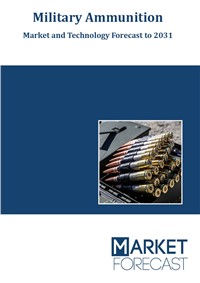The defence domain most often focuses on platforms and advanced technologies, leaving ammunition to less popular positions despite them being they key ingredient of combat operations. Without ammunition even the most technologically advanced platform is of no use.
The wars in Iraq and Afghanistan showed the improvements that would be required in the field of light weapons ammunition, to improve ground troops’ capability of engaging the enemy at longer distances and bearing greater impact force on the targets, while relieving them from the weight of carrying them.
Moreover, the war in Ukraine has shown that near-peer conflicts are back after almost two decades of counter-insurgency operations. The lessons learned have led to several changes in the weapons and ammunition landscape. However, the most important issue was the stark realization that western countries were not prepared to tackle such a contingency. Their preparation for a high-intensity conflict was limited, while the defence industrial complex had limited its capacity despite having grown in the last decade.
With ammunition being consumed at extremely high rates during high-intensity wars, stocks were quickly depleted, while the defence industry did not have the necessary production capacity to cover the demand. On top of the war in Ukraine defence officials are faced with multiple challenges, namely the high inflation rates which end up reducing defence budgets in real terms, the disruption or difficulties in the supply chains and the energy crisis which further exacerbates the financial constraints.
Market Forecast provides a detailed analysis of the Military Ammunition market up to 2031 in terms of calibre sizes, end-users and regions. The report also provides key technological developments and maps the ammunition production infrastructure in major countries all over the world.
Covered in this report
- Global market share assessments for all calibres to 2031.
- Market share assessments per segments and regions up to 2031.
- Snapshot on global security issues, defence budgets, spending patterns and how these affect the procurement of military ammunition.
- Focus on US, European, Asian-Pacific and Middle Eastern markets.
- Market dynamics and key players in the ammunition production and supply chain around the world.
- Decisions on ammunition production in key markets.
- An insight on the latest technological developments in the military ammunition.
- Market Trends: Drivers, Trends, Opportunities and Risks for the stakeholders that want to stay ahead of the competition.
- Profiles for the leading companies.
Segmentation
This report is segmented by Region, Calibre and User.Region
- North America
- Europe
- APAC
- Middle East & Africa
- RoW
- Small
- Medium
- Large
- Military
- Homeland Security
Who is This Report For?
This report is a must, particularly if you are one of the following:
- Business Leaders & Business Developers
- Market Analysts
- Government and Military decision-makers
- Component manufacturers
Reasons to buy
- Determine prospective procurement areas based on a procurement plan analysis of the Military Ammunition market over the next nine years.
- Gain an in-depth understanding of the underlying factors driving demand for Military Ammunition in the leading countries and other potential markets across the world and identify the opportunities offered by each of them.
- Strengthen your understanding of the market with regards to demand drivers, industry trends, potential risks and technological developments.
- Understand the geography of ammunition production around the world and how key markets are responding to the requirements of the high-intensity war in Ukraine.



